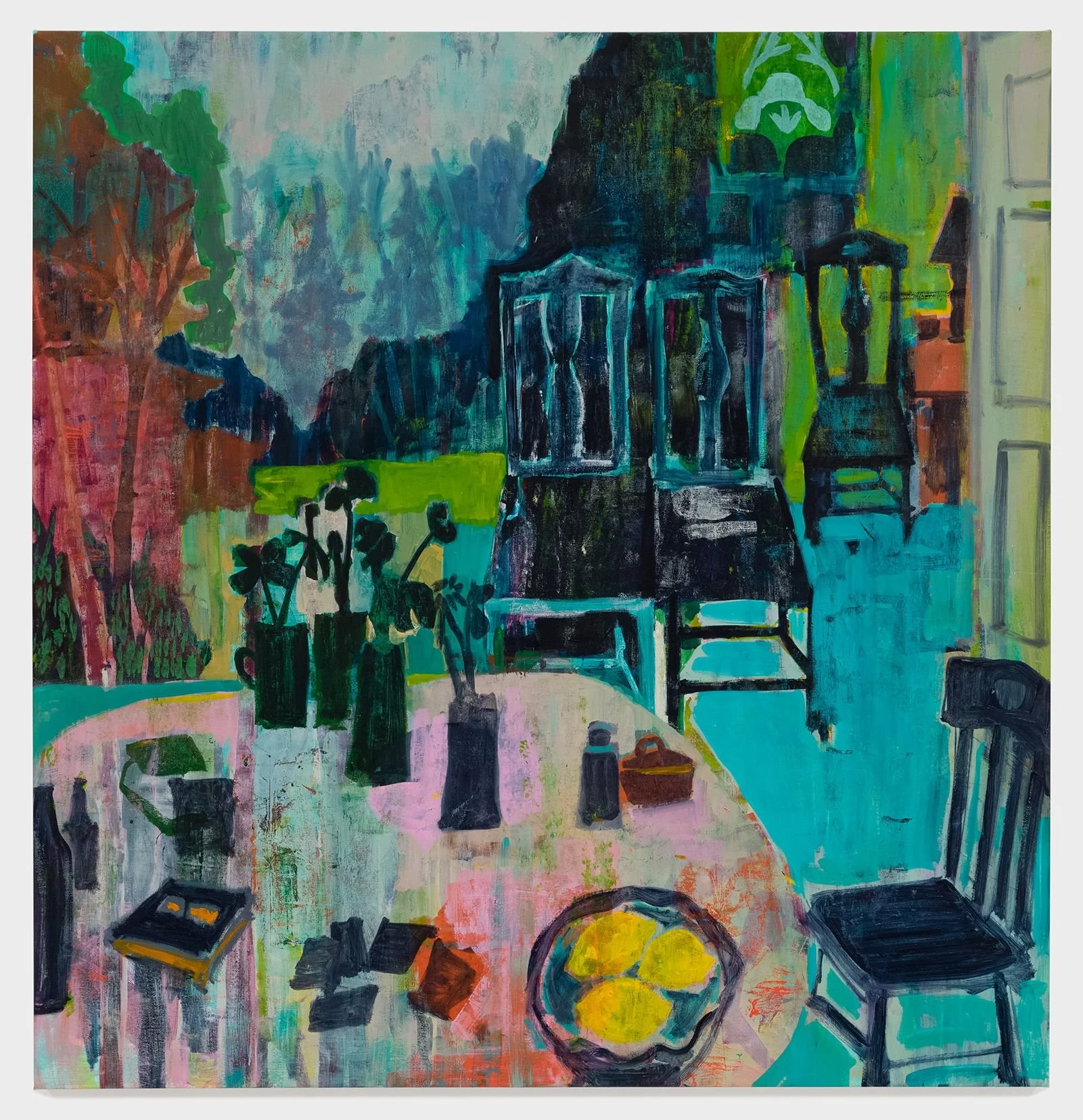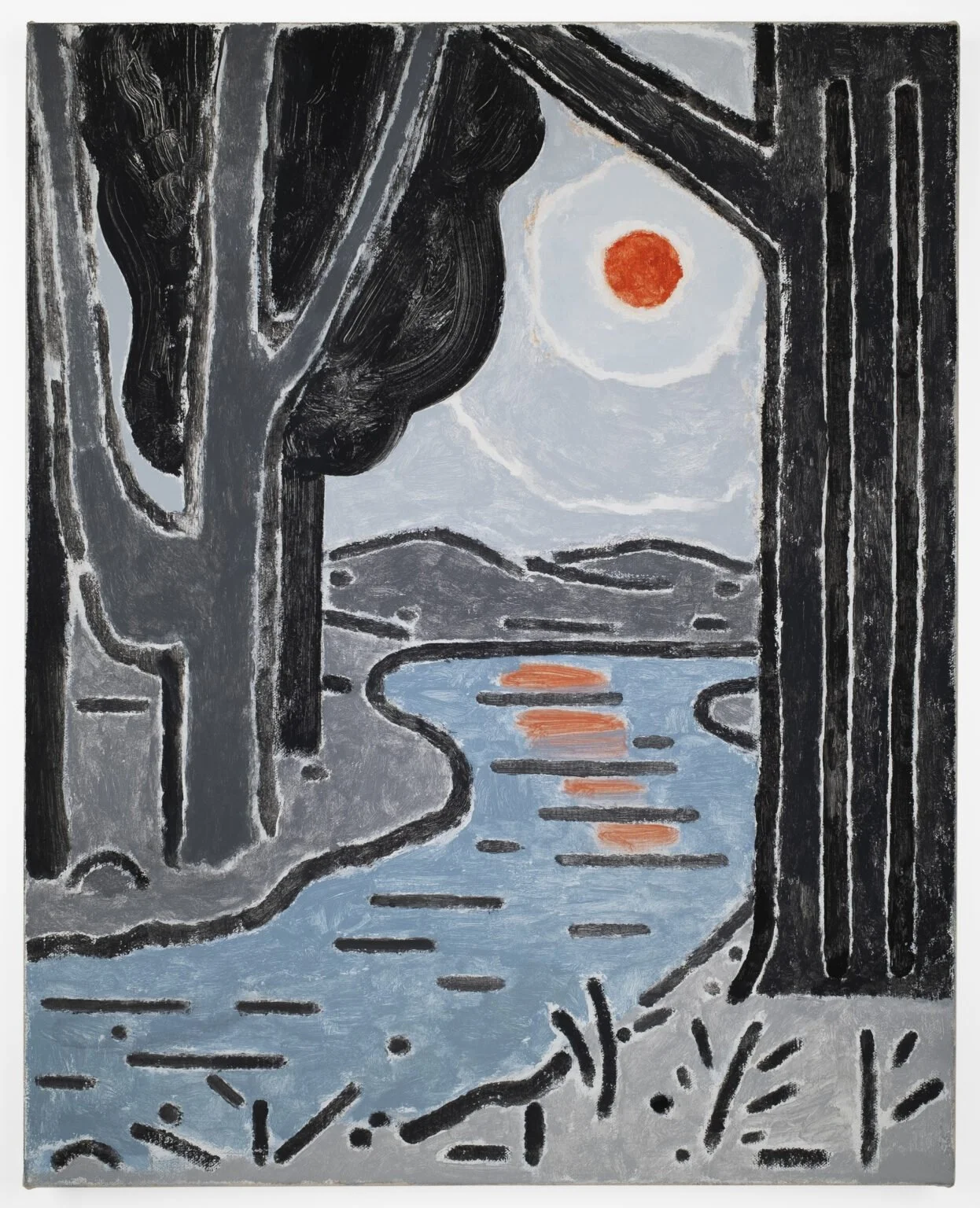Allison Gildersleeve
“A Thousand Other Things”
New York, 537b West 23rd Street
While previous paintings often lingered on the tangled rocky New England landscape of her youth, with this new series Gildersleeve has shifted her painterly gaze onto crowded and confused interiors, born of this seemingly endless year of stay-at-home suffocation. With a sleight of hand, surfaces peek out from stacks of books, tiny lit hallways beckon from the back, and sailboats from afar bleed into the inside. The overwhelming feeling is of luxuriating in the illogic of painting, but with the stifling sense of being locked in one’s familiar environment, every object and viewpoint refracted from the cumulative hours spent staring at the same spot. The title of the exhibition, “A Thousand Other Things”, could refer to this imaginary multiplying, or to the sense of the many longed for things we may have been denied, the dreams of what will change when the pandemic’s hold abates.
Allison Gildersleeve Of What Then, 2021 Oil and acrylic on canvas 52h x 50w in 132.08h x 127w cm ASG100
Gildersleeve has picked up on how, for many this year, time has both stopped, mired in lack of freedom and movement, and plunged forward erratically, with lifestyle changes necessitated by seismic yet microscopically experienced shifts. Gildersleeve has always created worlds not based in stasis or reality, but instead relying on memories and fleeting moments, often mixing time and space within the picture plane. Here, her gaze has shifted inward but the sense of accumulation continues – instead of leaves or rocks we observe the minutiae and mundanity of home/work. The artist notes that the rooms depicted act as “vessels of my thoughts and reveries”, and so we see this poignancy presented as fact. By now, no matter how extroverted, we’ve all struck new relationships with our possessions, our four walls, and their inhabitants. Instead of Collier brothers-level hoarding, Gildersleeve’s growing stacks are more sympathetically drawn.
One way we experience this sympathy is through exuberant color and quieter moments. Experimenting with collage, ink drawing, and acrylic on paper, Gildersleeve had already shifted her creamy, built up and labored surfaces for quicker flatter disrupted techniques. The ensuing works in the current series have a combination of translucent, scraped, or otherwise obliterated layers, and the artist’s trademark painterly density, so that our mind and eye can rest. Gildersleeve’s paintings echo quite clearly the anti-perspective of Matisse’s interiors, Bonnard’s use of color to define space, the fragmented spaces and narratives of Kitaj, and numerous other artists whose predilection for the quotidian propels the artistic imagination. But it is sometimes Hockney who speaks to Gildersleeve from afar - his playful high-color, his undeniable joy in spatial shifts, and his photo-collages of a room, a cascade of multiple slightly-off moments, never quite settling into a unity.







